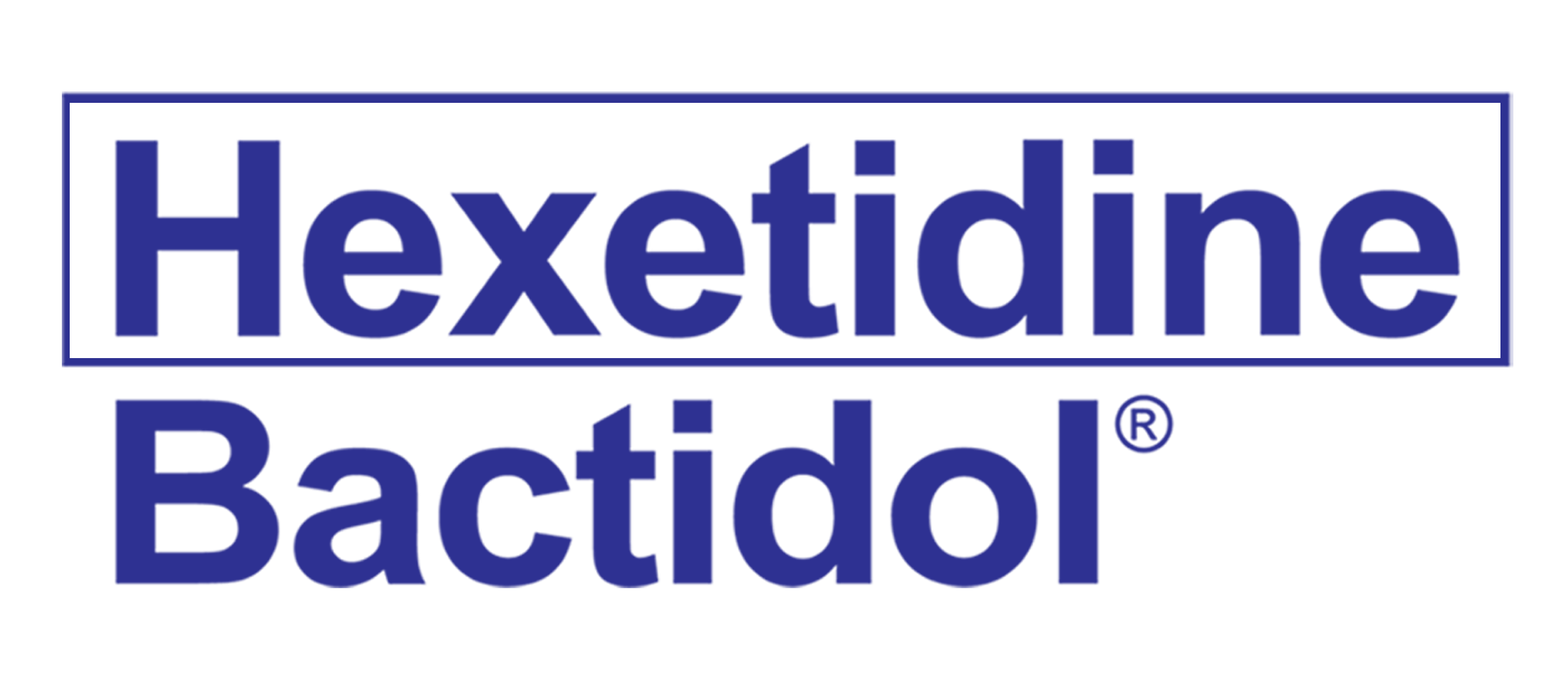
0.1 % Solution
Oral Antiseptic
Description of the Product:
Hexetidine (Bactidol) 0.1% Solution is a brilliantly clear reddish-pink liquid with a modified mint flavor, free from sediment and suspended particles.
What is in the Medicine and Strength of the Medicine:
Each 100 mL contains:
Hexetidine.................................100 mg
Alcohol.................................9%
What is the Medicine used for?
Hexetidine (Bactidol) 0.1% Solution is indicated for its antibacterial and antifungal action in the following circumstances:
Minor oropharyngeal infections and inflammatory conditions including candidiasis
As an aid in the prevention and treatment of gingivitis
In the management of sore throat and recurrent aphthous ulcers
Alleviation of halitosis
Pre- and post- oropharyngeal surgery
Daily oral hygiene including the prevention and control of dental plaque.
How much and how often should you use this Medicine?
Adults and children 12 years and over:
Rinse the mouth or gargle for 30 seconds with 10 to 20 mL of undiluted Hexetidine (Bactidol) 0.1% Solution or apply the product using a cotton wool swab for 2 to 3 minutes, not to exceed 3 times daily.
Do not swallow the solution but spit out after use.
Not recommended for children under 12 years of age.
When should you not take this Medicine?
Hypersensitivity to hexetidine or to any of the ingredients.
Care that should be taken when taking this Medicine?
For local use only. Do not swallow.
If symptoms persist or worsen, or if new symptoms occur, stop use and consult a physician.
Long term use is not recommended (not to exceed 10 days usage without consulting a doctor or dentist for further use)
Pregnancy and Lactation
There are no adequate and well-controlled studies in pregnant or breastfeeding women for hexetidine. It is not known whether hexetidine or its metabolites are excreted in breast milk. Negligible amount of hexetidine is systemically absorbed; it is unlikely that use of hexetidine during pregnancy or lactation will present a risk to the fetus or nursing infant.
However as with other products, hexetidine should not be used during pregnancy or lactation unless the potential benefit of treatment to the mother outweighs the possible risks to the developing fetus or nursing infant. Ask a physician before use if you are pregnant or breastfeeding.
Effects on Ability to Drive or Use Machines
Hexetidine has no known effect on the ability to drive and use machines
Undesirable effects of this Medicine
Post Marketing Data
Adverse drug reactions (ADRs) identified during Post-marketing experience with hexetidine are included. The frequencies are provided according to the following convention:
Very common ≥1/10
Common ≥1/100 and < 1/10
Uncommon ≥1/1,000 and <1/100
Rare ≥1/10,000 and <1/1,000
Very rare <1/10,000
Not known (cannot be estimated from the available data)
In Table 1, ADRs identified are presented by frequency category based on 1) incidence in adequately designed clinical trials or epidemiology studies, if available or 2) when incidence is unavailable, frequency category is listed as Not known.
Table 1. Adverse Drug Reactions Identified During Post-Marketing Experience with Hexetidine by Frequency Category Estimated from Clinical Trials or Epidemiology Studies
SOC
Frequency Category Adverse Drug Reaction Preferred Term
Immune System Disorders
Not known Hypersensitivity reaction*
Nervous System Disorders
Not known Ageusia
Not known Dysgeusia
Respiratory, Thoracic and Mediastinal Disorders
Not known Cough
Not known Dyspnoea**
Gastrointestinal Disorders
Not known Dry mouth
Not known Dysphagia
Not known Nausea
Not known Salivary gland enlargement
Not known Vomiting
Skin and subcutaneous tissue disorders
Not known Angioedema
General Disorders and Administration Site Conditions
Not known Application site reaction***
*Inclusion of the PT of hypersensitivity reaction was based on cases reporting the following additional MedDRA PTs: Hypersensitivity and Urticaria.
** Observed in the context of Hypersensitivity.
*** Inclusion of the PT of Application site reaction was based on cases reporting multiple MedDRA PTs. These included Mouth and Throat mucosa irritation, Paraesthesia oral, Tongue discolouration, Tooth discolouration, Inflammation, Blistering and Ulceration.
What other medicine or food should be avoided while taking this Medicine?
There are no known drug interactions for hexetidine.
What should you do if you miss a dose?
Continue medication based on dosage and or/consult your doctor.
Signs and Symptoms of Overdose:
Hexetidine, at the strength present in hexetidine products, is unlikely to be toxic when used as directed.
There is no evidence to suggest that repeated, excessive administration of hexetidine would lead to hypersensitivity-type reactions.
Ingestion of sufficient quantities of hexetidine in alcoholic solution may lead to signs/symptoms of alcohol intoxication.
Keep out of reach of children. In the event of overdose, get medical help or contact a Poison Control Center right away.
What to do when you have taken more than the recommended dosage?
Consult your doctor if you have taken more than the recommended dosage.
How should you keep this this Medicine?
Store at temperatures not exceeding 30°C.
When should you consult your doctor?
If symptoms persist or worsen, or if new symptoms occur, stop use and consult your doctor.
Manufactured by:
Interphil Laboratories, Inc.
Canlubang Industrial Estate, Bo. Pittland, Cabuyao, Laguna
Distributed by:
JNTL Consumer Health (Philippines), Inc.
KM 14 Edison Road, Merville, Parañaque City
Patient must seek medical attention immediately at the first sign of any adverse drug reaction. For suspected adverse drug reaction, report to the FDA: www.fda.gov.ph.

Registration Number: DRHR-102
Date of First Authorization: 18 July 2003
Version: 22 September 2017
